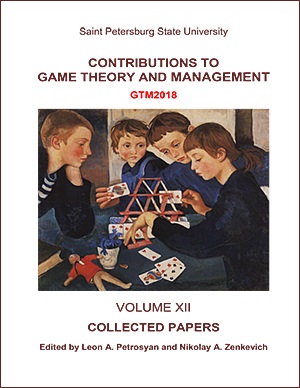Random Search Methods for the Solution of a Stackelberg Game of Resource Allocation
Abstract
We consider a dynamic Stackelberg game on a finite time interval. The game is reduced to a problem of infinite-dimensional optimization with two additional constraints. Two finite-dimensional approximations of the problem are defined. They are solved by two numerical algorithms which do not require calculation of the gradient of the payoff function. The first algorithm is an algorithm of simulated annealing with a uniform partition of the interval. The second algorithm uses a piecewise-constant approximation of the solution with a choice of the interval partition. Two illustrative examples connected with a resource allocation problem are considered. The numerical results are given and compared.
Keywords:
random search methods, Stackelberg game, resource allocation
Downloads
References
Downloads
Published
How to Cite
Issue
Section
License
Articles of "Contributions to Game Theory and Management" are open access distributed under the terms of the License Agreement with Saint Petersburg State University, which permits to the authors unrestricted distribution and self-archiving free of charge.




